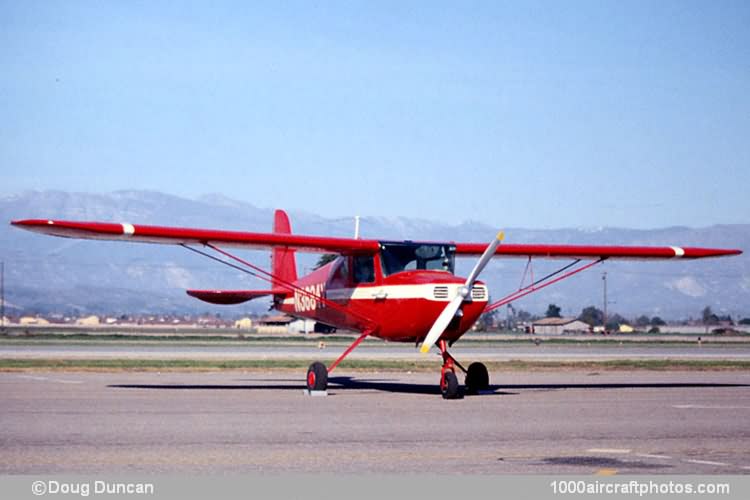12/31/2011. Remarks by Johan Visschedijk: "Early in 1945, Cessna saw another potential aircraft market starting to take shape. Congress had passed a Bill which would permit returning G.I.'s to get financial aid for educational purposes. One of the approved educational programs was flight training. Cessna management noted this turn of events with keen interest. Thousands of servicemen would be returning and would want to learn to fly in the new air age.
Two-seat training aircraft would be needed and surplus aircraft would not meet this need. Because of these events, management decided that the trainer market would create the greatest demand for commercial aircraft immediately following the war. After serious consideration of all markets, in the spring of 1945, Cessna directed all its engineering effort toward the development of a two-seat ship in the shortest possible time. Two versions of this airplane were offered in production: a Model 140 and a Model 120.
Several months later, the first prototype of the Cessna Model 140 emerged from a busy experimental department and made its first flight on June 28, 1945. The little deluxe two-seat ship was powered with an 85 hp Continental engine and was Cessna's first all-metal airplane with the exception of the fabric covered wings incorporating flaps.
The Model 140 featured an elliptical shaped tail cone, contoured cowling, additional side windows, electrical system, and deluxe upholstery. The second and third prototypes of the Model 140 made their first flights in the fall of 1945, most noticeable external changes over the first prototype were the new tail cone, additional windows, and a new cowling. The first deliveries were made in March 1946.
The Model 120 was a "stripped-down" airplane for the trainer market. It did not have wing flaps and initially no extra side windows. The electrical system was optional. Its upholstery was simple and functional. In all other respects the Models 140 and 120 were identical and immediate successes. Production spiraled upward until a rate of 30 airplanes per day was reached in the fall of 1946.
In the fall of 1946, business was booming and it looked as though the more aircraft you could make, the more you could sell. Other light plane manufacturers were also pouring aircraft from the assembly line into the two-seat airplane market. Then it happened! Suddenly, the two-seat airplane market filled up. Production progressively declined until Cessna's assembly lines were only producing five aircraft per day by the end of 1947. (3842 Model 120s and 140s were built in 1946; 2522 in 1947; and 835 in 1948.)
In 1949, Cessna converted the fabric covered wings of the Model 140 to all-metal covering, creating the Model 140A, while the Model 120 was dropped. However, only 525 Model 140A were sold in the two-year period of 1949 and 1950. As a result of the low sales demand, the Model 140A was dropped from production near the end of 1950.
12/31/2011. Remarks by Doug Duncan: "As the Cessna 120 was never offered in a tricycle gear model, this 1948-built aircraft must be a modification. Both the Cessna 120 and 140 were prone to nosing over if the brakes were applied too heavily, so landing gear extenders were offered, which moved the main wheels forward 2-3" to help compensate. The tricycle-gear modification here would certainly remove that possibility altogether, and would create what could essentially be called the very first Cessna 150."
